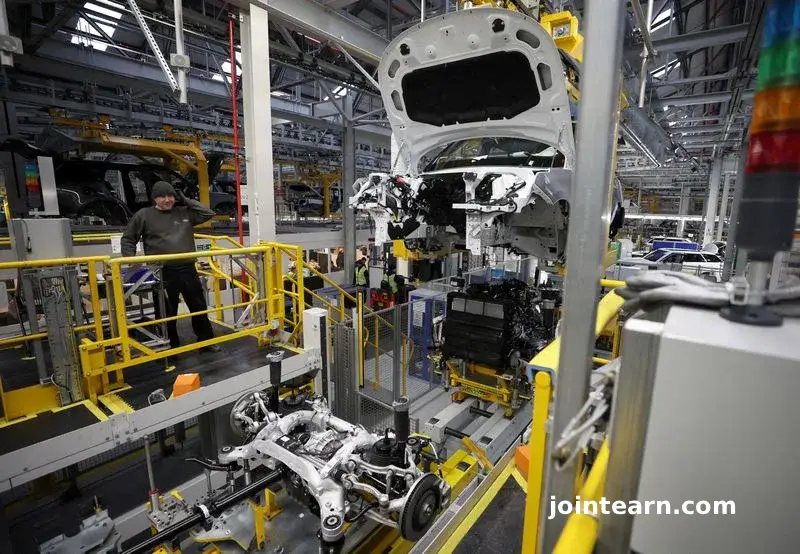
UK’s Most Damaging Cyberattack Paralyzes Jaguar Land Rover and Thousands of Suppliers
LONDON — A devastating cyberattack on Jaguar Land Rover (JLR), the luxury automaker owned by India’s Tata Motors, has caused an estimated $2.5 billion (1.9 billion pounds) in losses to the UK economy, according to a new report released by the Cyber Monitoring Centre (CMC) on Wednesday.
The report — compiled by independent cybersecurity experts, including a former head of Britain’s National Cyber Security Centre (NCSC) — described the JLR breach as “the most economically damaging cyber event to hit the UK” to date.
The incident, which occurred in August 2025, disrupted production at JLR’s three major UK factories for nearly six weeks, severely impacting over 5,000 suppliers and partner organizations across the automotive sector.
Massive Financial and Manufacturing Impact
The CMC’s assessment warned that losses could increase further if JLR fails to fully restore its production capacity soon.
“The vast majority of the financial impact stems from lost manufacturing output at JLR and its network of suppliers,” the report stated.
Before the cyberattack, JLR’s factories — located in Solihull, Halewood, and Castle Bromwich — produced roughly 1,000 vehicles per day, including models from its Range Rover, Defender, and Jaguar lines.
Analysts estimated the company lost 50 million pounds ($67 million) per week during the shutdown, forcing the British government to step in with a 1.5 billion-pound loan guarantee in late September to support JLR and its struggling supply chain.
A JLR spokesperson declined to comment on the report but confirmed that production resumed earlier this month, marking the start of a gradual recovery process.
A Category 3 Systemic Cyber Event
The Cyber Monitoring Centre, funded by the UK insurance sector, ranks cybersecurity incidents on a five-tier scale. The JLR breach was classified as a Category 3 “systemic event”, indicating widespread disruption to national economic infrastructure.
“The estimate reflects the substantial disruption to JLR’s manufacturing operations, its multi-tier supply chain, and downstream organizations including dealerships,” the report said.
Cybersecurity analysts believe the hackers gained access through a compromised third-party supplier, underscoring the vulnerability of interconnected manufacturing systems.
Broader Impact on British Industry
The JLR cyberattack is part of a wave of high-profile cyber incidents affecting major UK companies in 2025. In April, Marks & Spencer suffered a two-month outage after a data breach, costing the retailer nearly 300 million pounds ($400 million) in lost sales.
Experts warn that such attacks demonstrate the growing systemic risk of cyber threats to the UK’s manufacturing and retail sectors — both vital pillars of the economy.
“This incident should serve as a wake-up call to British industry,” said Rachel Stone, a cybersecurity researcher at King’s College London. “It highlights how dependent our critical supply chains have become on digital systems — and how fragile they can be.”
Looking Ahead: JLR’s Recovery and Future Safeguards
JLR is expected to release its financial results in November, which will provide a clearer picture of the long-term economic and operational fallout.
In the meantime, the automaker has accelerated investment in cyber resilience, hiring top security firms to fortify its production networks and safeguard sensitive design and supply data.
The UK government has also announced plans to expand its Cyber Defence Partnership Program, aimed at protecting critical national industries such as automotive, energy, and logistics from future large-scale attacks.
“This was a painful but important lesson,” said Andrew Wallace, an advisor to the UK Department for Business and Trade. “Cybersecurity must now be treated with the same urgency as physical safety in manufacturing.”
As Britain rebuilds from its most damaging cyber event on record, the JLR hack serves as both a warning and a catalyst for stronger national cyber defence strategies.


Leave a Reply